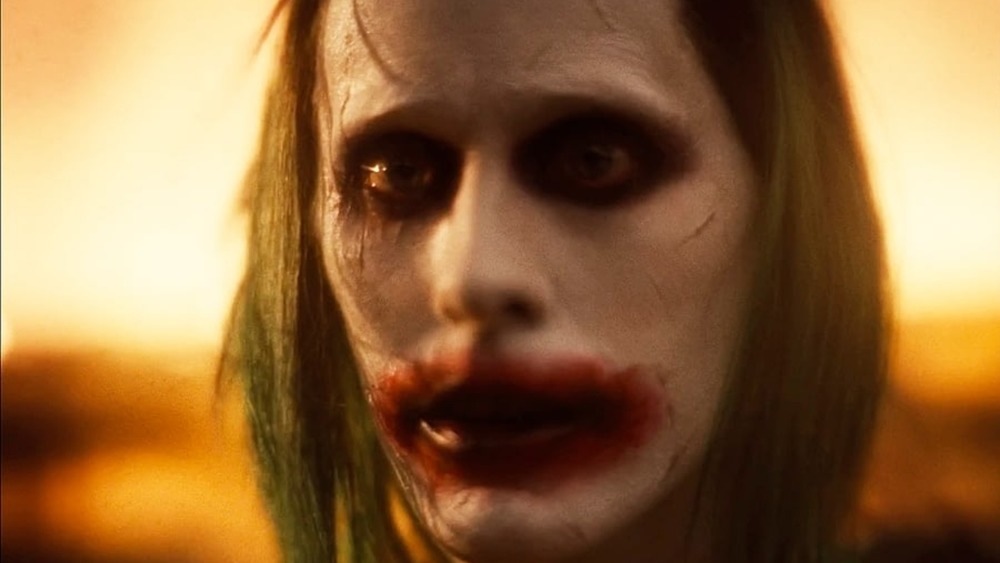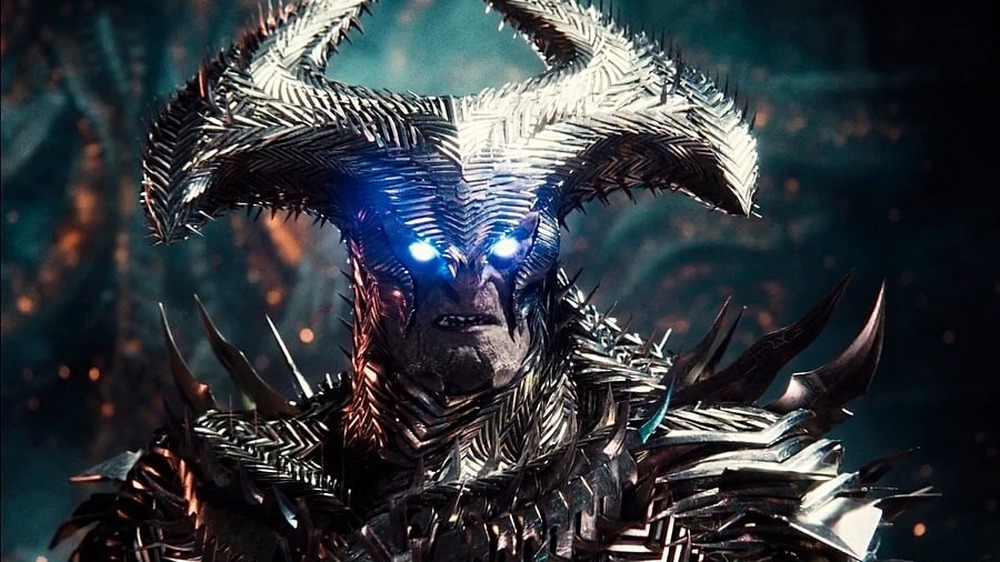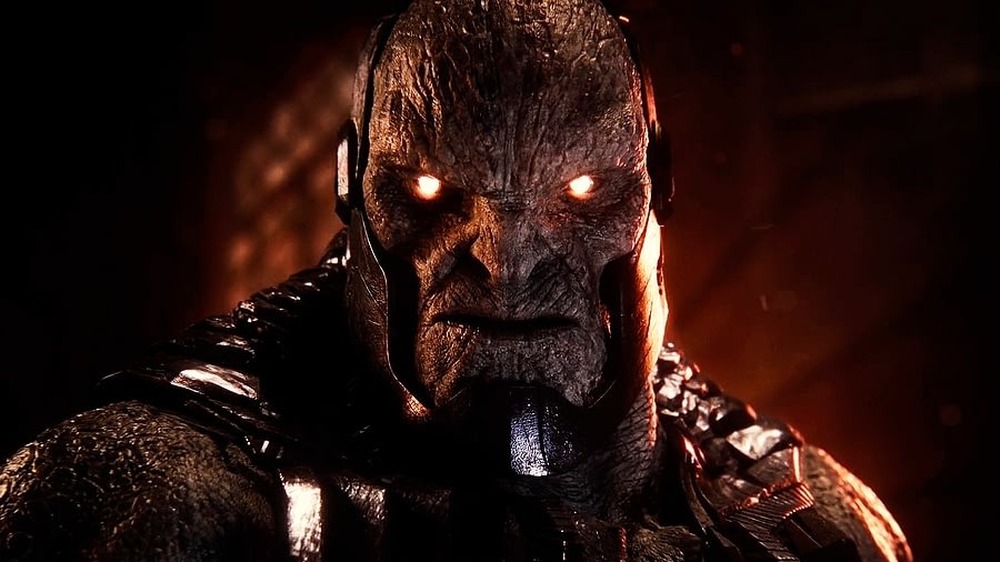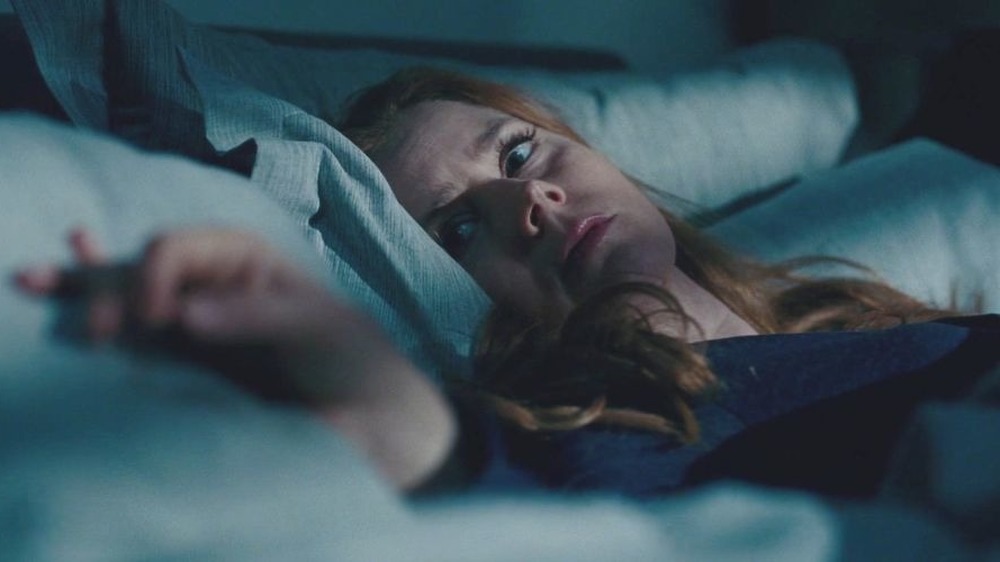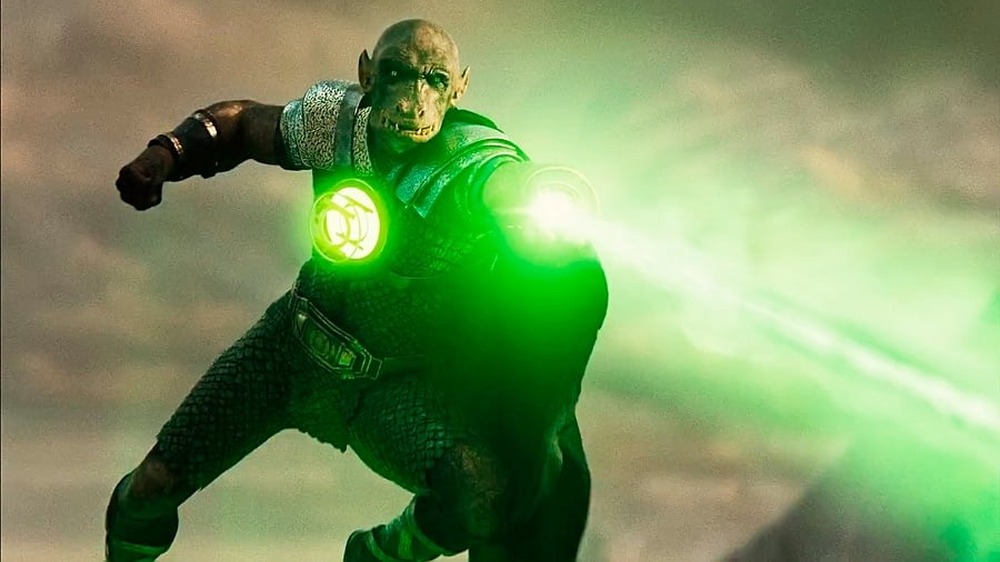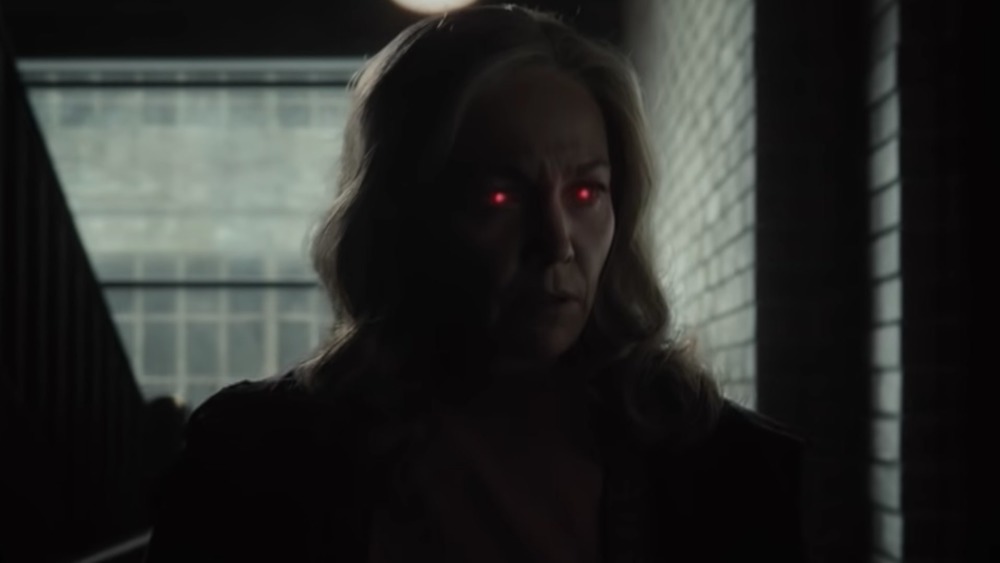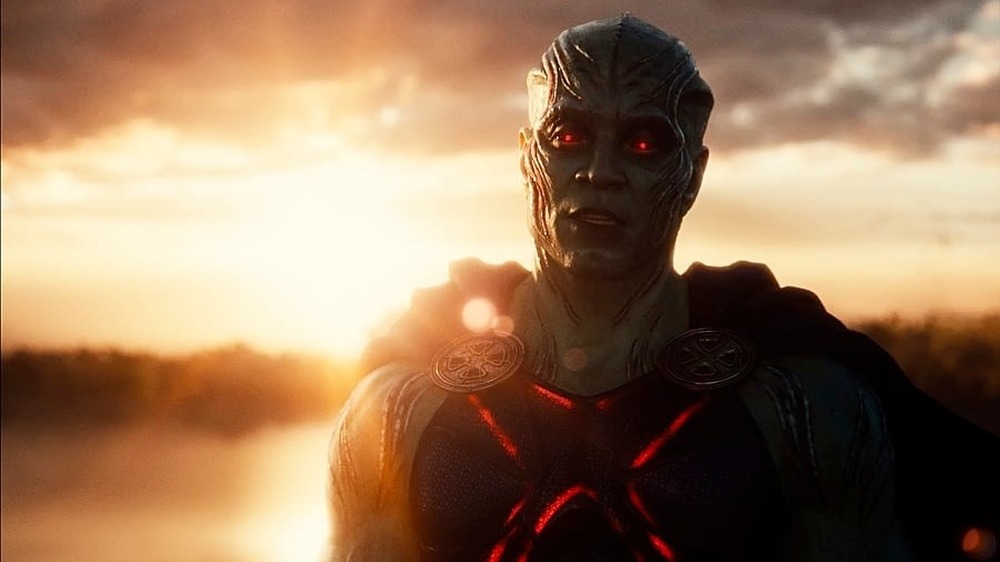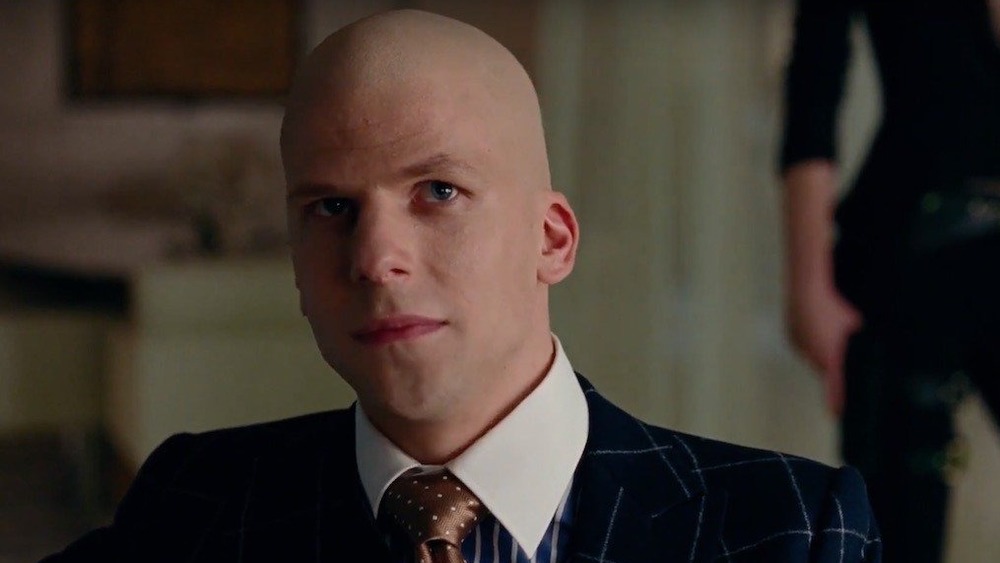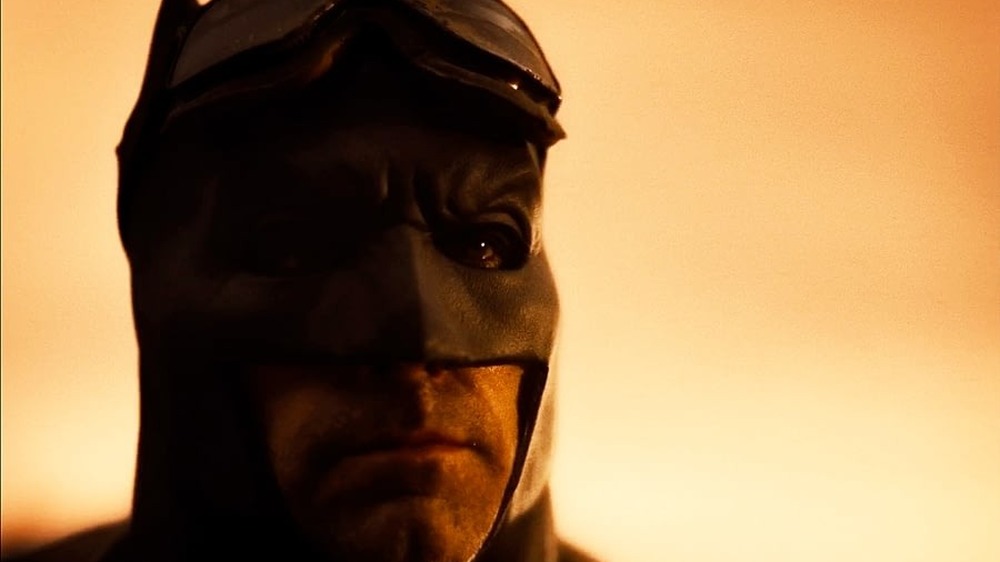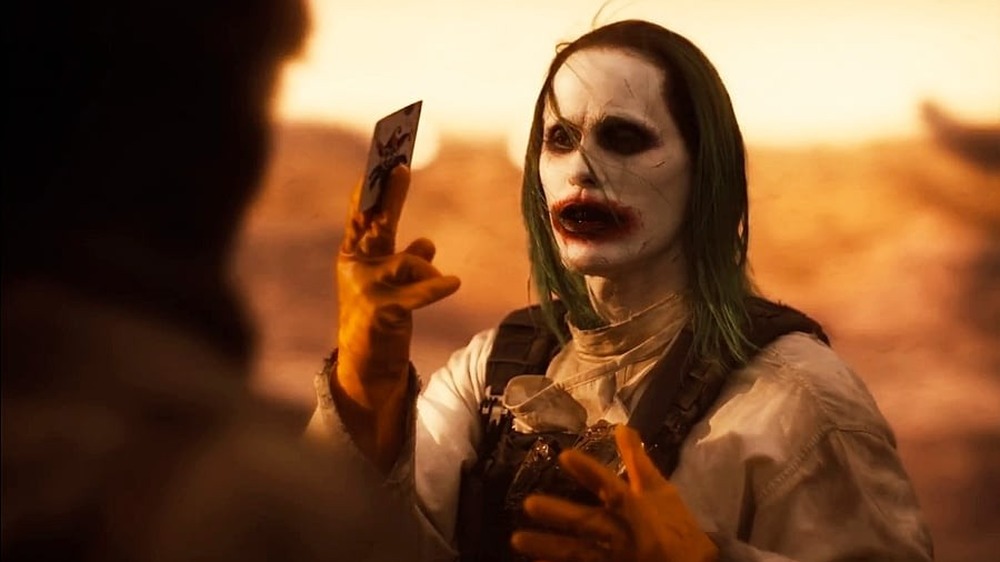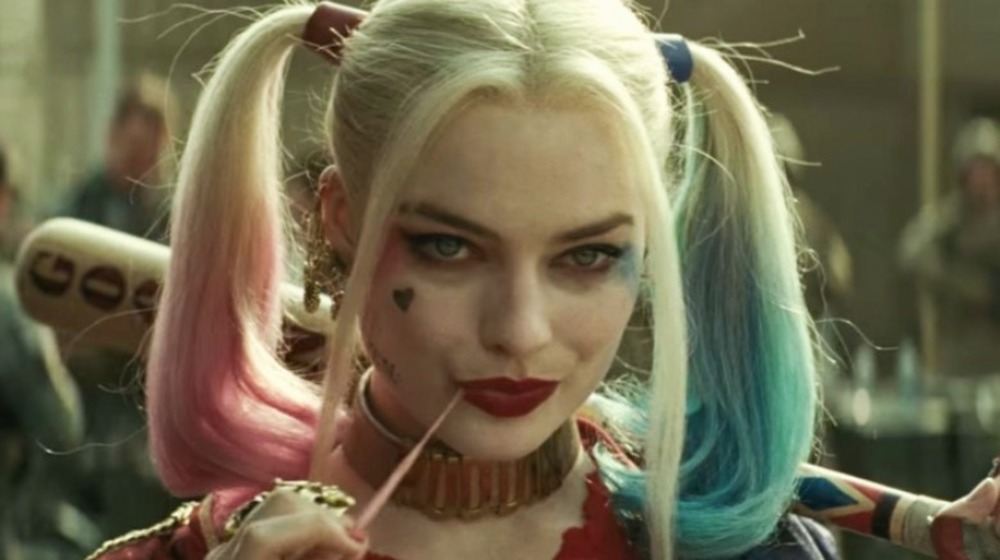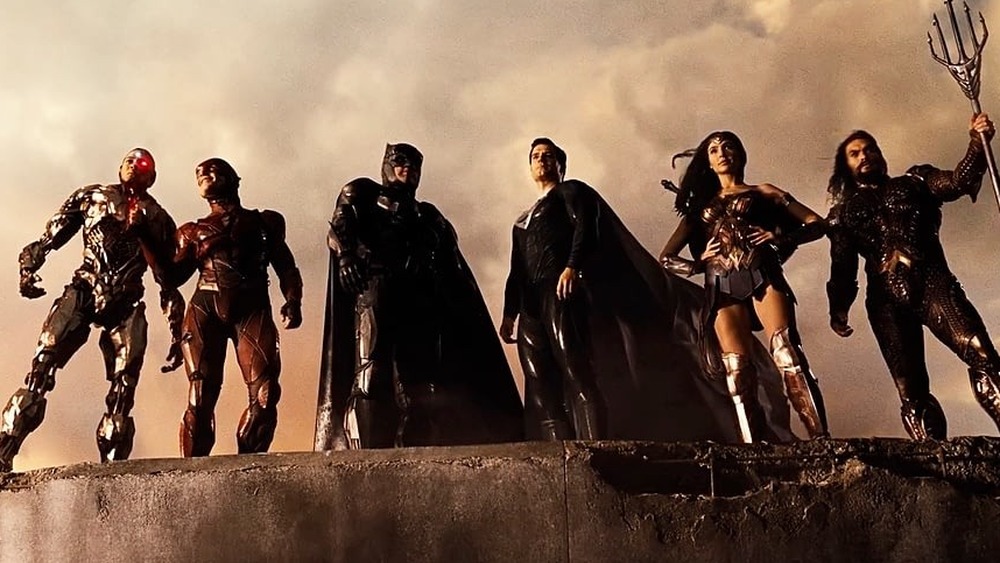The Biggest Unanswered Questions In Zack Snyder's Justice League
If you click a link and buy a product or service from a merchant, we may be paid an affiliate commission.
After a long wait, fans of director Zack Snyder's vision of the DCEU can finally watch Zack Snyder's Justice League on HBO Max. The longer version of the film gives fans a chance to see more heroes, more villains, and in some cases more fleshed out versions of the characters that were already featured in the 2017 theatrical version. More than anything, we all get to finally learn what exactly was so different between what Snyder wanted for us, and what we got in 2017.
But that doesn't mean all of our questions are answered. In spite of the unlikelihood of Zack Snyder's Justice League seeing any kind of theatrical follow-up, the director gives us the story that was originally planned, including a vision of a bleak, post-apocalyptic future in which most of the world's superheroes are gone and the Man of Steel is working with the bad guys.
While Batman's "Knightmare" is the most blatant source of our questions about the film, it's not the only one. We're still left with some of the more ambiguous motivations of both heroes and villains, the fates of certain characters, and the absences of others. For specifics, keep reading for our biggest unanswered questions in Zack Snyder's Justice League. Spoilers to follow.
Exactly what happened between Steppenwolf and Darkseid?
Not long after he emerges in Themyscira, Steppenwolf is contacted by Desaad regarding his progress in conquering Earth. During their exchange, we learn that Steppenwolf is not Darkseid's favorite guy right now. Steppenwolf begs for the chance to return home once he conquers Earth — a plea Desaad reacts to with anger. He says Steppenwolf's "self-pride" made him betray Darkseid, and this is why he still owes the ruler of Apokolips 50 thousand worlds before he can return home.
What betrayal is Desaad talking about? Well, the most obvious answer is that Steppenwolf was part of a rebellion against Darkseid, and perhaps was even its leader. This seems to be the case, since Steppenwolf defends himself to Desaad by saying he saw his mistake and "slaughtered those who sought his throne." It would also accurately reflect the villains' relationship in the source material. But it's never explicitly stated what happened and considering what we know about Darkseid, the notion that Steppenwolf or anyone else could be a part of a failed rebellion against him and survive the experience is nothing short of miraculous.
It's also worth noting that Steppenwolf is nowhere to be seen in the flashback of Darkseid's first attempt to conquer Earth. Could it be that Darkseid blames Steppenwolf, at least in part, for something he did that contributed to the dark tyrant's defeat so many years ago?
How could Darkseid forget about the Anti-Life Equation?
After reporting to Desaad that he's discovered the Anti-Life Equation on Earth, Steppenwolf is shocked to be contacted by Darkseid himself. While it's clear Steppenwolf still needs to conquer Earth before Darkseid is willing to bring him back to his inner circle, the very fact that he deigns to speak to Steppenwolf is a clear sign that Darkseid's view of his nephew has improved at least a little bit.
But what's confusing is the fact that the location of the Anti-Life Equation needs to be rediscovered. We see Darkseid finding it in the flashback to his first unsuccessful battle against the combined forces of Earth. We're also told his defeat on Earth was the first, and likely only, such loss. Yet when Steppenwolf discovers the Anti-Life Equation, we're told Darkseid had lost the location of the world. How? The Earth is not only a world that contains the tool he's wanted for his entire existence, but it has the distinction of being the only one to humiliate him. How could he forget it? How could he, with all of his advanced technology, lose its location?
One possibility is that it would have been revealed that this was a side effect of the DCEU version of the Anti-Life Equation — that to discover it and not immediately possess it would obscure the minds and technology of those who found it.
Is Lois Lane pregnant?
There are a lot of hints dropped in Zack Snyder's Justice League that Lois Lane is expecting Superman's baby, including a shot of a pregnancy test in her apartment. While the film doesn't offer a definitive answer, the director himself has chimed in. In a March 2021 interview with Esquire, Zack Snyder confirmed that Lois Lane is "definitely pregnant" in the film. And that isn't all he said.
Having Superman's child isn't rare in contemporary media. He has a super-powered son in the comics, in 2006's Superman Returns he has a son who is eventually revealed to have powers, while the 2019-20 Crisis on Infinite Earths CW crossover reveals Tyler Hoechlin's Superman has twins. The Superman & Lois series shows us the boys in high school, with one of them showing signs of increased abilities though not exactly on par with the Man of Steel.
What Snyder told Esquire is a lot different. First of all, the director said Lois and Clark's expected child is a boy and he would have no powers. Second, he revealed that his long term plan was that Ben Affleck's Batman would eventually sacrifice himself, and that — under the mentorship of Barbara Gordon — the child of Superman would become the next Batman.
Where is the Green Lantern Corps?
Because of his March 2021 interview with Esquire, we know Zack Snyder actually planned a scene with the Green Lantern John Stewart for Justice League and almost quit over the question of including it. But while Stewart doesn't show up in Zack Snyder's Justice League, we do get brief appearances from two other Green Lanterns. In the flashback to the past we see the obscure Lantern Yalan Gur joining the forces of Earth against Darkseid. Unfortunately, he doesn't last long against the tyrant and is brutally killed. Later in one of the post-apocalyptic Knightmare shots we see the corpse of Kilowog, one of the more well known alien members of the Green Lantern Corps.
But we're still left with the very big question of why the Green Lantern Corps isn't getting itself involved with Steppenwolf's attempt to take over the Earth during the present storyline of Zack Snyder's Justice League. The world's most powerful champion — Superman — is dead for most of the film, and the conquering of the world would mean not only the deaths of millions if not billions of humans, but Darkseid finally claiming the Anti-Life Equation. This would seem worthy of sending at least one or two Corps members to support the Justice League.
With Snyder's plans changed, we're left to only speculate. Perhaps the Lanterns don't know about Steppenwolf's incursion, or perhaps there's no current Lantern in sector 2814 — the number designated as Earth's sector.
Will Lois Lane figure out she was visited by Martian Manhunter?
Shortly after the person who appears to be Martha Kent visits Lois Lane in Metropolis, we learn that it's in fact J'onn J'onzz, aka the Martian Manhunter. Fans had long theorized that Harry Lennix's General Swanwick — introduced in 2013's Man of Steel — was the Martian survivor in disguise and Zack Snyder's Justice League confirms it. But in light of the rest of the film, we have to wonder whether or not Lois Lane will ever discover that she was visited by the Martian Manhunter.
At the very least, it seems likely she would eventually learn she was visited by someone who wasn't Martha Kent. After all, Martha is reunited with Lois and her son toward the end of the film in Kansas. It seems like it would be perfectly natural for Lois to eventually say something to Martha like, "Thank you for visiting me in Metropolis," to which Martha would presumably answer that she didn't know what Lois was talking about.
It seems likely that — not realizing that Superman would eventually be resurrected — Martian Manhunter assumed Lois Lane and Martha Kent wouldn't be speaking to each other any time soon. It also makes us wonder if, in light of his reveal at the end of the film, J'onzz will fess up to his deception so as to not cause Lois and the Kents to freak out without reason.
Why didn't Martian Manhunter take a more direct hand?
After visiting Lois Lane, Martian Manhunter's time in Zack Snyder's Justice League isn't over. At the end of the film he visits Bruce Wayne, hoping to be of service in any future crises.
Which begs the question of exactly why it takes him so long to reveal himself. The Earth certainly could have used him to do more than give Lois Lane a pep talk. If this Martian Manhunter is meant to be anything like his comic book counterpart, he'd be one of the most powerful members of the team, if not the most powerful. His abilities in the source material include super strength, flight, heat vision, intangibility, shape shifting, and telepathy. So — superpower-wise — imagine if Superman, Professor X, Kitty Pryde, and Mystique all decided it was time they just became the same person.
It could be that 2016's Batman v. Superman: Dawn of Justice tells us why the hero waited so long. Martian Manhunter likely saw the arrival of Superman as something of a litmus test for how Earth would react to the presence of a powerful alien being, and in Dawn of Justice the reaction is that one of Earth's heroes attempts to murder that being. The Manhunter from Mars probably took the events of Dawn of Justice as a sign that it was a good idea to keep to the shadows.
What's Lex's plan?
Right before the final "Knightmare" sequence, Zack Snyder's Justice League gives us a new version of the meet-up between Lex Luthor and Deathstroke. Rather than talking about forming a team to counter the Justice League, Lex reveals Batman's secret identity to Slade Wilson. This was likely meant to lead into the original plans for The Batman when Ben Affleck was still attached as the lead.
But there's a larger question of what exactly Lex is up to here. Is this just his way of disrupting things for Batman, or does he think — in spite of the Dark Knight nearly killing Superman in Dawn of Justice – that Deathstroke has what it takes to kill him? Or is he playing a longer game here? Does he, perhaps, have longer term plans to form an Injustice League and is simply using this moment to earn Deathstroke's trust?
We may never know, unfortunately, but speculation is always half the fun.
What's feeding Batman's dreams?
We first see Batman's visions of a world fallen to Darkseid's armies in Batman v. Superman: Dawn of Justice. The end of Zack Snyder's Justice League gives us another vision. This new "Knightmare" begins with Batman and his small band of rebels hiding from Darkseid's parademons, and ends with the arrival of a hostile Superman.
What still isn't clear, however, is exactly what or who is sending Batman these visions. Not to mention the visions Cyborg experiences. They seem far too specific to simply be random imaginings. And while the vision from Dawn of Justice serves to feed Batman's distrust of Superman, that conflict is over now.
Considering the mysterious arrival and disappearance of who appeared to be the Flash in Dawn of Justice right after Batman's first "Knightmare" — and that we know the Flash of the DCEU, like his comic book counterpart, is capable of time travel — there's a good chance that time travel is at work here. The fact that Joker mentions alternate timelines in his conversation with Batman points to that as well. But that still doesn't explain why Wayne receives the visions he does when he does, or how they keep appearing as dreams. It could be that some kind of time travel telepathy is being utilized, but how that's achieved is still a mystery. Martian Manhunter does appear to Batman right after he wakes from the "Knightmare," but — unless he's in disguise — isn't in the vision himself.
Why does Batman need the Joker?
In Batman's "Knightmare" vision, it's clear that the future has gotten bad enough that former enemies are now allies. Along with Justice League teammates Flash and Cyborg, Batman is joined by the Atlantean Mera, the mercenary Deathstroke, and his arch-nemesis the Joker. As Joker taunts Batman with memories of those he's lost — particularly that of Jason Todd, the Robin that Joker murdered — Joker makes it clear he doesn't take any of Batman's threats seriously. He tells the Dark Knight that he needs the Joker "to undo the world" Batman made.
It's a mystery what Joker means here. Without any superpowers of his own, Joker wouldn't necessarily seem to be the key to any kind of battle with Darkseid or a Darkseid-controlled Superman. It could be that the heroes simply need anyone with any kind of combat prowess along for the ride, and a Gotham villain capable of going one-on-one with Batman fits the bill. But, particularly with Joker's mention of "alternate timelines," he seems to be pointing toward something more specific.
One clue could be Joker mentioning that Batman made this world by "letting" Lois Lane die. Joker quips about "how she suffered so!" Could it be that Joker murdered Lois and that they need the clown to somehow undo this via time travel? Whatever the answer is, considering Joker's words and the presence of the Flash, we think it's a sure bet time travel is involved.
How does Harley Quinn die?
After Joker's done taunting Batman, Bruce responds by revealing that Harley Quinn died in his arms and that supposedly her last words were a plea that Batman make Joker's death a slow one. The tale almost seems like enough to provoke Joker into attacking Batman, but eventually he simmers down and says "Oh, you're good. You almost had me."
Assuming Batman is telling the truth, we have to wonder how Harley Quinn died. Considering the state the world is in, it's obvious that plenty of superheroes and villains have died fighting Darkseid and his armies. From the various "Knightmare" visions in the film we know Wonder Woman and Kilowog have died, and Mera strongly implies that Superman killed Aquaman. There's a decent chance Harley Quinn is another victim of this war, either as a part of the Suicide Squad or otherwise allied with Earth's defenders.
Though we do have to wonder if Batman is telling the whole truth here. Considering how thoroughly Harley is able to free herself from Joker's shadow in 2020's Birds of Prey, it would seem particularly strange for her last words to have anything to do with the clown. It could be that when Joker says "You almost had me," he doesn't just mean Batman almost provoked Joker, but that he almost had the clown believing a lie.
Will we ever see more?
So, what now? Zack Snyder's Justice League hints at so many more promising directions in which Snyder wanted to bring the story of DC's most iconic heroes. Darkseid seems intent on invading the Earth at the end of the film, Lex Luthor has his own plans, and Martian Manhunter is ready to join the League. Not to mention that while the film features two fallen Green Lanterns, more well-known versions of the characters like John Stewart and Hal Jordan have yet to get a shot.
For now, it seems that Zack Snyder's Justice League serves — in spite of its cliffhangers — as a triumphant conclusion to the so-called "Snyderverse." Speaking to Variety in March 2021, WarnerMedia Studios CEO Ann Sarnoff made it clear that the plan moving forward is to say goodbye to Snyder's conceptions of this cinematic universe. "For certain fans that want singular voices, they may be disappointed," Sarnoff warned. "[B]ut we would ask them to be patient and see what we've got in store because perhaps the newer voices in the mix will have just as compelling stories to tell."
But who knows? Between the theatrical release of Justice League in 2017 and 2020, probably everyone but the fans campaigning for the Snyder Cut likely never expected Zack Snyder's Justice League to ever be realized, and yet here it is. We're willing to bet that at the very least, some of the same fans are ready to start campaigning one more time.
